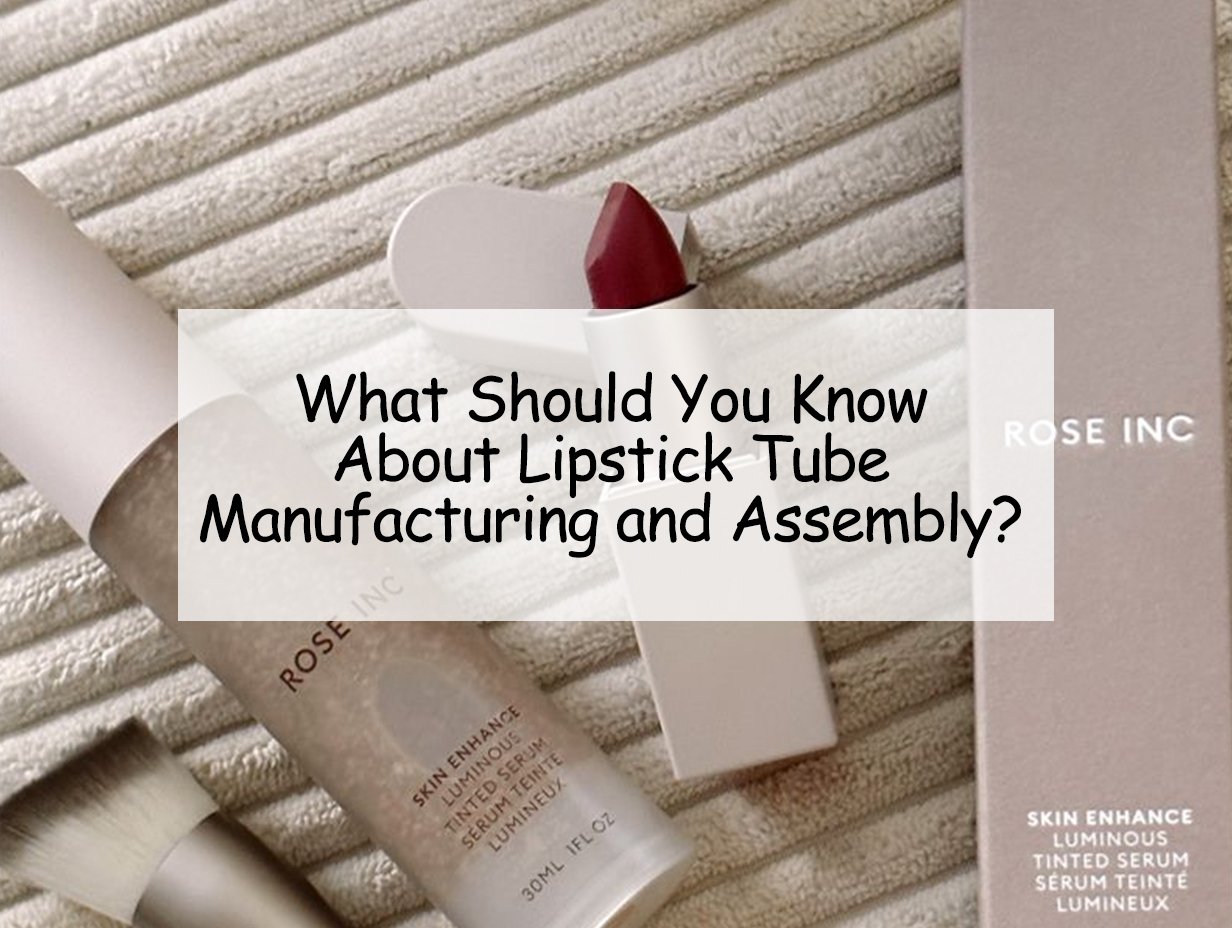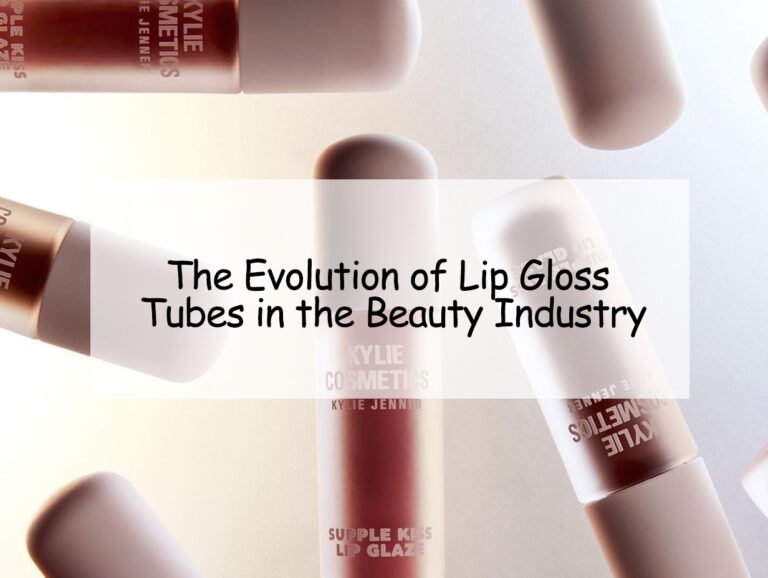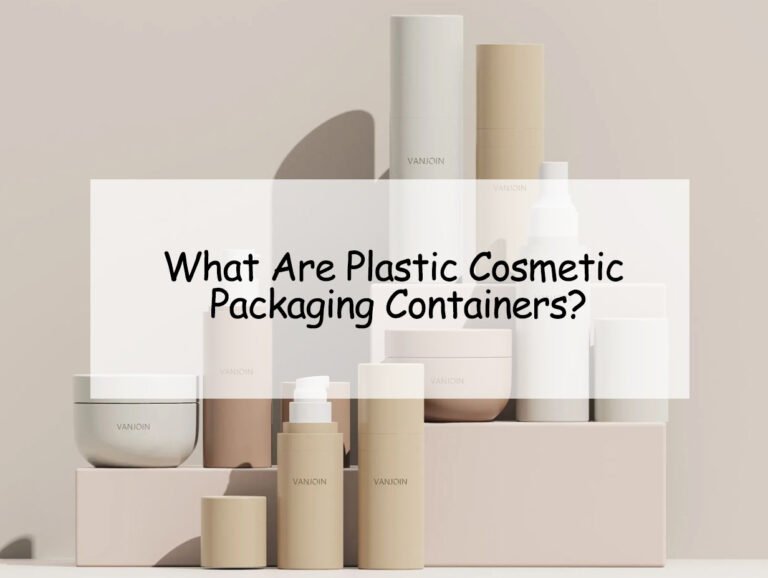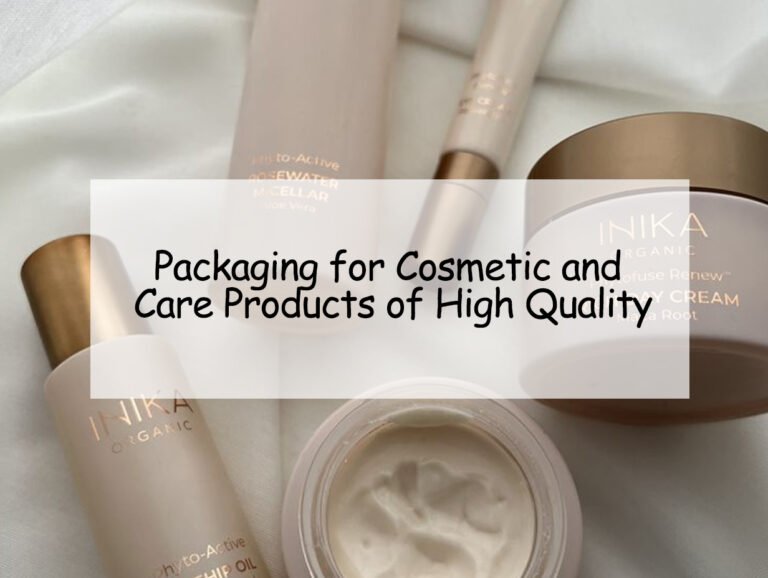Wondering how your lipstick tubes are created? From selecting materials to final assembly, the manufacturing process ensures each tube is both functional and visually appealing for an exceptional user experience.
Lipstick tube manufacturing involves multiple crucial steps, such as material selection, molding, and assembly. These steps ensure that each tube is durable, aesthetically pleasing, and performs reliably for consumers.
Keep reading to uncover the detailed steps involved in creating a perfect lipstick tube and how they contribute to quality and consumer satisfaction.
What Are the Key Steps in Lipstick Tube Manufacturing?
Struggling to understand how lipstick tubes are made? The manufacturing process involves key steps, from choosing the right materials to final assembly, ensuring both quality and functionality.
Lipstick tube manufacturing involves several essential steps, including material selection1, molding2, and quality control3. Each stage ensures that the final product is durable, functional, and visually appealing for consumers.
Material Selection and Preparation
Choosing the right materials is the foundation of quality lipstick tubes. Typically, plastics like PET (Polyethylene Terephthalate)4 and HDPE (High-Density Polyethylene)5 are preferred for their durability and safety.
Types of Materials Used
- PET: Offers clarity and strength, ideal for showcasing the lipstick color.
- HDPE: Provides flexibility and resistance to impact, ensuring the tube withstands daily use.
- Eco-Friendly Options: Biodegradable plastics6 and recycled materials are increasingly popular for sustainable packaging.
| Material Type | Benefits | Drawbacks |
|---|---|---|
| PET | Clear, strong, recyclable | More expensive than some plastics |
| HDPE | Flexible, impact-resistant | Less clarity for product visibility |
| Biodegradable Plastics | Environmentally friendly, renewable | Limited availability and higher cost |
Molding and Shaping
Once the materials are selected, the next step is molding. Injection molding7 is commonly used to shape the tubes precisely.
Injection Molding Process
- Melting: Plastic pellets are heated until molten.
- Injection: The molten plastic is injected into a mold cavity.
- Cooling: The plastic cools and solidifies in the mold.
- Ejection: The formed tube is ejected from the mold.
Precision and Efficiency
Injection molding] allows for high precision and consistency, which is essential for producing uniform lipstick tubes. Advanced machinery ensures that each tube meets the exact specifications required for optimal functionality and aesthetic appeal.
Assembly and Finishing
After molding, the tubes undergo assembly, which includes attaching components like caps, applicators, and seals.
Key Assembly Steps
- Cap Attachment: Ensures the lipstick remains protected and maintains hygiene.
- Applicator Installation: Critical for user experience, the applicator must fit securely.
- Sealing: Guarantees product safety and longevity.
Automation in Assembly
Modern manufacturing facilities utilize automated assembly lines8 to enhance efficiency and reduce the risk of human error. Automation ensures that each component is attached precisely, maintaining high standards of quality across all products.
Quality Control and Testing
Maintaining high standards is essential in lipstick tube manufacturing. Quality control involves rigorous testing at each stage.
Quality Assurance Practices
- Visual Inspection: Checks for defects in molding and assembly.
- Functional Testing: Ensures caps and applicators work correctly.
- Material Testing: Verifies the integrity and safety of the materials used.
Continuous Improvement
Implementing continuous improvement9 practices, such as Six Sigma10 or Total Quality Management (TQM)11, helps manufacturers identify and eliminate defects, ensuring that every lipstick tube meets the highest quality standards.
Packaging and Distribution
The final step is packaging, where lipstick tubes are prepared for distribution.
Packaging Considerations
- Protection: Ensures tubes are not damaged during transit.
- Branding: Packaging design reflects the brand's identity and appeals to consumers.
- Sustainability: Eco-friendly packaging12 materials are increasingly favored.
| Packaging Aspect | Importance | Implementation |
|---|---|---|
| Protection | Prevents damage during shipping | Use of sturdy boxes and cushioning materials |
| Branding | Attracts consumers | Custom designs, logos, and color schemes |
| Sustainability | Appeals to eco-conscious consumers | Use of recyclable or biodegradable packaging |
How Does Assembly Impact the Functionality of Lipstick Tubes?
Is your lipstick tube assembly affecting product performance? Proper assembly is key to ensuring smooth operation, preventing issues like leakage and improving overall usability for a reliable user experience.
The assembly process plays a crucial role in lipstick tube functionality. Ensuring proper alignment and smooth operation prevents issues like leakage, ensuring the product works effectively and provides a positive user experience.
Precision in Component Integration
Accurate assembly of components like caps and applicators is vital. Misalignment can cause leaks or make the lipstick difficult to apply.
Importance of Precision
- Leak Prevention: Properly fitted caps prevent product spills.
- Ease of Use: Smooth opening and closing mechanisms enhance user experience.
- Durability: Well-assembled tubes withstand daily handling without damage.
Impact on User Experience
The ease with which a consumer can use the lipstick tube is a direct result of the assembly quality.
User-Friendly Features
- Smooth Twisting Mechanism: Allows effortless dispensing of the lipstick.
- Secure Sealing: Maintains product freshness and hygiene.
- Ergonomic Design: Comfortable grip and balanced weight for easy application.
Efficiency in Production
Efficient assembly processes reduce production time and costs, ensuring that high-quality lipstick tubes are produced consistently.
Streamlining Assembly
- Automation: Using automated machinery8 for repetitive tasks increases consistency.
- Quality Checks: Regular inspections during assembly prevent defects.
- Training: Skilled workers ensure that assembly is performed accurately.
Enhancing Product Longevity
Proper assembly contributes to the durability of the lipstick tube, ensuring that it remains functional throughout its use.
Factors Influencing Longevity
- Material Quality: High-quality materials resist wear and tear.
- Assembly Techniques: Robust assembly methods prevent parts from loosening over time.
- Design Innovations: Features like double-sealing can extend the product's shelf life.
Challenges in Assembly
Despite its importance, assembling lipstick tubes poses challenges such as ensuring uniformity and managing production speeds.
Overcoming Assembly Challenges
- Advanced Machinery: Investing in high-precision machinery reduces errors.
- Process Optimization: Continuous improvement of assembly processes enhances efficiency.
- Quality Control Systems: Implementing stringent quality checks ensures consistency.
| Aspect | Impact on Functionality | Solutions |
|---|---|---|
| Component Integration | Prevents leaks and ensures smooth use | Use precision machinery and trained personnel |
| User Experience | Enhances ease of use and satisfaction | Design ergonomic and user-friendly features |
| Production Efficiency | Reduces costs and increases output | Automate assembly processes and optimize workflows |
| Product Longevity | Ensures durability and reliability | Use high-quality materials and robust assembly techniques |
What Materials Are Best for Lipstick Tube Containers?
Are you unsure about the best materials for lipstick tubes? Choosing the right materials is essential for durability, safety, and sustainability while maintaining aesthetic appeal and functionality.
Selecting the right materials for lipstick tubes ensures durability, safety, and eco-friendliness. PET4, HDPE5, and biodegradable plastics are popular choices, balancing strength, visual appeal, and environmental responsibility in packaging design.
PET (Polyethylene Terephthalate)
PET is widely used for its clarity and strength, making it ideal for showcasing lipstick colors.
Benefits of PET
- Clarity: Allows consumers to see the product color clearly.
- Durability: Resistant to impact and breakage.
- Recyclable: Environmentally friendly as it can be recycled.
HDPE (High-Density Polyethylene)
HDPE is favored for its flexibility and impact resistance, ensuring the tube can withstand daily use.
Benefits of HDPE
- Flexibility: Prevents cracking and breaking under pressure.
- Impact Resistance: Protects the product from external forces.
- Lightweight: Reduces shipping costs and material usage.
Biodegradable Plastics
As sustainability becomes a priority, biodegradable plastics are gaining popularity for eco-friendly lipstick tubes.
Benefits of Biodegradable Plastics
- Environmentally Friendly: Breaks down naturally, reducing landfill waste.
- Renewable Resources: Often derived from plant-based materials.
- Innovative Designs: Allows for creative and sustainable packaging solutions.
Glass and Metal Alternatives
Some brands opt for glass or metal lipstick tubes for a premium feel and added durability.
Benefits of Glass and Metal
- Premium Aesthetics: Offers a luxurious look and feel.
- Reusability: Can be reused by consumers, extending the product's life.
- Recyclable: Both materials are highly recyclable, supporting sustainability goals.
Choosing the Right Material
Selecting the appropriate material depends on factors like brand positioning, target audience, and sustainability goals.
Considerations for Material Selection
- Brand Image: Align material choice with brand values and aesthetics.
- Consumer Preferences: Understand what materials resonate with your target market.
- Cost Efficiency: Balance quality with budget constraints.
- Sustainability: Prioritize eco-friendly options to meet environmental standards.
| Material Type | Key Benefits | Ideal For |
|---|---|---|
| PET | Clarity, durability, recyclable | Brands focusing on vibrant product display |
| HDPE | Flexibility, impact resistance, lightweight | Mass-market brands seeking durability |
| Biodegradable Plastics | Eco-friendly, renewable, innovative designs | Sustainable and eco-conscious brands |
| Glass and Metal | Premium aesthetics, reusability, recyclable | Luxury and high-end beauty brands |
How to Maintain Quality Control in Lipstick Tube Production?
Worried about inconsistent lipstick tube quality? Effective quality control is key to ensuring every tube meets the highest standards, from functionality to aesthetic appeal, for a reliable consumer experience.
Quality control in lipstick tube production involves regular inspections and rigorous testing to maintain consistency. By adhering to manufacturing standards, brands ensure that every lipstick tube meets functional and aesthetic expectations, ensuring consumer satisfaction.
Implementing Strict Inspection Protocols
Regular inspections at each stage of production help identify and rectify defects early.
Key Inspection Points
- Material Quality: Ensure raw materials meet specified standards.
- Molding Accuracy: Check for consistent shapes and dimensions.
- Assembly Precision: Verify that all components are securely attached.
Utilizing Advanced Testing Methods
Employing advanced testing methods10 ensures the durability and safety of lipstick tubes.
Types of Testing
- Drop Testing: Assess the tube's resistance to impact.
- Leak Testing: Ensure caps and seals prevent leaks.
- Sterility Testing: Verify that tubes are free from contaminants.
Training and Skill Development
Well-trained staff are crucial for maintaining high-quality production standards.
Training Programs
- Technical Training: Equip workers with the skills needed for operating machinery and performing inspections.
- Quality Standards Education: Ensure all team members understand the importance of quality control and the specific standards they must meet.
- Continuous Learning: Encourage ongoing education to keep up with industry advancements and best practices.
Adopting Quality Management Systems
Implementing comprehensive Quality Management Systems (QMS)7 helps streamline quality control processes.
Benefits of QMS
- Standardization: Ensures consistent quality across all production batches.
- Documentation: Maintains records of inspections, tests, and corrective actions.
- Continuous Improvement: Identifies areas for improvement and implements necessary changes.
Collaborating with Reliable Suppliers
Working with reputable suppliers ensures that the raw materials used are of high quality.
Supplier Quality Assurance
- Certifications: Choose suppliers with relevant quality certifications.
- Audits: Conduct regular audits to verify supplier compliance with quality standards.
- Partnerships: Foster strong relationships with suppliers to ensure mutual commitment to quality.
Addressing Defects and Implementing Corrective Actions
Promptly addressing defects and implementing corrective measures prevents recurring issues.
Corrective Action Steps
- Root Cause Analysis: Identify the underlying cause of defects.
- Process Modification: Adjust manufacturing processes to eliminate defects.
- Employee Feedback: Involve workers in identifying and solving quality issues.
| Quality Control Aspect | Importance | Best Practices |
|---|---|---|
| Inspection Protocols | Early defect detection | Regular inspections at each production stage |
| Advanced Testing | Ensures product durability and safety | Drop, leak, and sterility testing |
| Training Programs | Skilled workforce | Technical and quality standards education |
| Quality Management Systems | Streamlines quality processes | Implement QMS for standardization and improvement |
| Supplier Collaboration | Ensures high-quality raw materials | Choose certified, reliable suppliers |
Case Study: JINLIN’s Approach to Overcoming Manufacturing Challenges
At JINLIN, we have developed robust strategies to address the common challenges in lipstick tube manufacturing. By implementing strict quality control measures, optimizing our production processes, and maintaining strong relationships with reliable suppliers, we ensure consistent quality and timely delivery of our products.
Our investment in advanced machinery and skilled technicians allows us to handle technical challenges efficiently. Additionally, our commitment to continuous improvement and adaptability enables us to stay ahead of market trends and meet the evolving demands of our clients.
Through these efforts, JINLIN successfully navigates the complexities of lipstick tube manufacturing, providing high-quality, customized, and eco-friendly packaging solutions to beauty brands worldwide.
What Challenges Should You Expect in Lipstick Tube Manufacturing?
Facing challenges in lipstick tube manufacturing? From quality control to cost management, several hurdles can impact production efficiency and product quality, but overcoming them is crucial for success.
Lipstick tube manufacturing presents challenges such as maintaining consistent quality, controlling costs, and meeting delivery timelines. Overcoming these obstacles ensures smooth production processes and high-quality products that meet market demands.
Maintaining Consistent Quality
Ensuring uniform quality across all lipstick tubes can be challenging due to variations in materials and production processes.
Strategies for Consistency
- Standard Operating Procedures: Implement detailed procedures for each production step.
- Regular Audits: Conduct frequent quality audits to identify and rectify inconsistencies.
- Automated Systems: Use automation to minimize human error and maintain uniformity.
Managing Production Costs
Balancing cost efficiency with quality can be difficult, especially with fluctuating material prices.
Cost Management Techniques
- Bulk Purchasing: Reduce costs by buying materials in large quantities.
- Efficient Manufacturing: Optimize production processes to minimize waste and increase productivity.
- Supplier Negotiations: Negotiate better terms with suppliers to lower material costs.
Ensuring Timely Delivery
Meeting production deadlines is critical to maintaining customer satisfaction and avoiding delays in the supply chain.
Ensuring Timeliness
- Effective Scheduling: Plan production schedules meticulously to meet deadlines.
- Inventory Management: Maintain adequate inventory levels to prevent production halts.
- Logistics Coordination: Work closely with logistics partners to ensure timely delivery of products.
Adapting to Market Demands
The beauty industry is dynamic, with changing consumer preferences and trends that require manufacturers to be flexible.
Adapting Strategies
- Market Research: Continuously monitor market trends and consumer preferences.
- Flexible Production Lines: Invest in adaptable machinery that can quickly switch between different product types.
- Innovative Design: Stay ahead of trends by offering innovative and customizable packaging solutions.
Overcoming Technical Challenges
Technical issues, such as machinery malfunctions or material defects, can disrupt production.
Technical Solutions
- Regular Maintenance: Perform routine maintenance on machinery to prevent breakdowns.
- Quality Materials: Source high-quality materials to reduce the likelihood of defects.
- Skilled Technicians: Employ skilled technicians who can quickly address and resolve technical issues.
Regulatory Compliance
Adhering to industry regulations and standards is essential but can be complex and time-consuming.
Compliance Measures
- Stay Informed: Keep up-to-date with relevant regulations and standards.
- Documentation: Maintain thorough records of compliance-related activities.
- Training: Educate employees on regulatory requirements and best practices.
Overcoming Assembly Challenges
Proper assembly is crucial but comes with its own set of challenges, including ensuring uniformity and managing production speeds.
Solutions to Assembly Challenges
- Advanced Machinery: Invest in high-precision machinery to reduce errors during assembly.
- Process Optimization: Continuously improve assembly processes to enhance efficiency.
- Quality Control Systems: Implement stringent quality checks to ensure consistency and reliability in assembly.
Balancing Quality and Cost
Maintaining high-quality standards while managing production costs is a delicate balance that manufacturers must achieve.
Balancing Strategies
- Value Engineering: Optimize product design to reduce costs without compromising quality.
- Lean Manufacturing: Implement Lean Manufacturing13 principles to eliminate waste and improve efficiency.
- Supplier Partnerships: Build strong partnerships with suppliers to secure better pricing and reliable material quality.
Addressing Environmental Concerns
Sustainability is becoming increasingly important in cosmetic packaging, and manufacturers must address environmental concerns.
Environmental Strategies
- Eco-Friendly Materials: Use recycled or biodegradable materials6 to reduce environmental impact.
- Sustainable Practices: Implement sustainable manufacturing practices to minimize waste and energy consumption.
- Certifications: Obtain eco-certifications to validate sustainability efforts and appeal to eco-conscious consumers.
Case Study: JINLIN’s Sourcing Strategy
At JINLIN, we prioritize sourcing empty lipstick tubes wholesale from reputable and sustainable suppliers. Our rigorous selection process ensures that we partner with suppliers who meet our high standards for quality and eco-friendliness.
By attending industry trade shows and leveraging our extensive network, we identify and collaborate with top suppliers who offer customizable and eco-friendly lipstick tube solutions. This approach not only guarantees the consistency and reliability of our products but also supports our clients' sustainability goals.
Our strong relationships with suppliers enable us to maintain competitive pricing and ensure timely delivery, allowing us to meet the diverse needs of beauty brands across Southeast Asia, the Middle East, and South America.
| Sourcing Aspect | Key Considerations | Implementation Strategies |
|---|---|---|
| Supplier Quality | High standards, quality control | Conduct thorough inspections and audits |
| Customization Capabilities | Ability to provide tailored designs | Collaborate closely on design specifications |
| Sustainability Practices | Eco-friendly materials and processes | Choose suppliers with eco-certifications |
| Reliable Delivery | Consistent and timely shipping | Establish clear delivery schedules |
| Competitive Pricing | Fair pricing without compromising quality | Negotiate bulk discounts and favorable terms |
Conclusion
Understanding lipstick tube manufacturing ensures high-quality, functional, and sustainable packaging solutions.
-
Learn more about material selection in manufacturing and its impact on product quality. ↩
-
Understand the injection molding process and its role in shaping plastic products. ↩
-
Discover effective quality control practices to maintain high production standards. ↩
-
Learn more about PET, its properties, and why it's commonly used in packaging materials. ↩ ↩
-
Understand the benefits and applications of HDPE in manufacturing durable products. ↩ ↩
-
Explore the types and benefits of biodegradable plastics for sustainable packaging solutions. ↩ ↩
-
Gain insights into Quality Management Systems (QMS) and their importance in quality control. ↩ ↩
-
Understand how automation enhances efficiency and reduces human error in production assembly lines. ↩ ↩
-
Discover continuous improvement practices like Six Sigma and TQM in manufacturing. ↩
-
Learn about advanced testing methods used to ensure product durability and safety. ↩ ↩
-
Discover how Total Quality Management (TQM) ensures consistent quality in production. ↩
-
Explore various sustainable materials used in packaging to minimize environmental impact. ↩
-
Learn strategies to eliminate waste and improve productivity in manufacturing processes. ↩
2.png)

](https://jinlinpackaging.com/wp-content/uploads/2024/11/What-Are-the-Key-Steps-in-Lipstick-Tube-Manufacturing.jpg)
](https://jinlinpackaging.com/wp-content/uploads/2024/11/How-Does-Assembly-Impact-the-Functionality-of-Lipstick-Tubes.jpg)
](https://jinlinpackaging.com/wp-content/uploads/2024/11/What-Materials-Are-Best-for-Lipstick-Tube-Containers.jpg)
](https://jinlinpackaging.com/wp-content/uploads/2024/11/How-to-Maintain-Quality-Control-in-Lipstick-Tube-Production.jpg)
](https://jinlinpackaging.com/wp-content/uploads/2024/11/What-Challenges-Should-You-Expect-in-Lipstick-Tube-Manufacturing.jpg)




